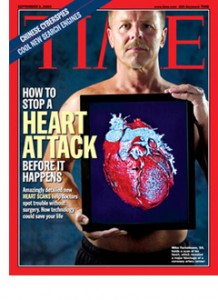The medical profession is of the opinion that breast cancer is multi-factorial, where genetics, body weight, hormonal and other factors play a role in causing it (details see Ref. 1). The Wisconsin Longitudinal Study (United States) showed in May 2012 that girls from families of lower socioeconomic status have a higher risk of breast cancer later in life. The study also showed that girls from families with a higher socioeconomic status had a low risk of breast cancer later in life.
The same cohort of women was the subject of another study, which was just published in April of 2013. In this study the question was asked whether stress in career women could cause a higher rate of breast cancer. Using 1957–2011 data showed that 297 of the 3682 White non-Hispanic women of the Wisconsin Longitudinal Study developed breast cancer. Details of the study showed that the peak of the age for breast cancer to develop was around 55 to 65. Women working with the lowest job authority had the lowest rate of breast cancer. High job authority, being the “boss”, was associated with a 1.57-fold (range 1.12 – 2.18-fold) increase in breast cancer. There was also a striking difference between the lengths of job stress exposure, 5 years versus 15 years with both groups, high and low job authority. The lowest risk of breast cancer was for the low stress group of women who worked under these conditions only for 5 years, followed by the same group who had worked there for 15 years. Slightly above that latter group was the breast cancer risk for the 5-year employed high job authority. The highest group of breast cancer risk, rising above all other groups, was the group with high job authority, exposed to this for type of stressful situation for 15 years (see Fig. 1 of the above link). The researchers interpreted their data to say that the majority of the breast cancer risk in these groups of women was due to the stress hormone (cortisol). Minor contributions were thought to be due to the carcinogenic effect of estrogens.
Review of the literature regarding this study
Dr. Lee had been publishing about estrogen dominance for many years (Ref. 2 and 3). When women age, their ovaries do not produce as much progesterone during the luteal phase as in younger years and above the age of 30 to 35 anovulatory cycles are common. During anovulatory cycles ovulation (=release of an egg) does not occur and there is no formation of a corpus luteum that would produce progesterone for 2 weeks. The end result is that there is a lack of progesterone as a woman ages. This has been discussed in detail in Ref. 3. Dr. Lee called this disbalance of estrogen and progesterone “estrogen dominance”. This is one of the important causes of breast cancer as explained in Ref.2. This can be caused by aging, xenoestrogens from exposure to artificial fertilizers, insecticides and cosmetics, but also taking the birth control pill for prolonged periods of time. However, stress by itself can also produce a state of estrogen dominance. Dr. Lee explained (page 180 of Ref. 2) that the cortisol-binding globulin (CBG), which binds both cortisol and progesterone, is a storage form for both of these hormones. As a person is under chronic stress the CBG is increased binding both cortisol and progesterone. This means that less of these hormones are preliminarily available in their free form for body consumption as CBG binding is a storage form for these hormones. The free progesterone, which is the only biologically active progesterone portion, is lowered as a result of stress causing estrogen dominance. If estrogen is not opposed by progesterone, it is cancer causing for breast tissue and the uterine lining, which translates into being at risk for breast and uterine cancer. Only supplementation with bioidentical progesterone cream as described in Ref. 3 will rebalance the hormones (progesterone/estrogen balance) and reduce the cancer risk. The symptoms of estrogen dominance according to Ref. 4 (p. 29) are fatigue, weight gain, less ability to handle stress, headaches, mood swings, loss of sex drive, irregular periods, uterine fibroids, fibrocystic breasts, fluid retention (particularly around the ankles), irritability and depression.
Practical recommendations for women in stressful jobs
Above the age of 35 it is wise to have a saliva hormone test done, checking the levels of 5 hormones (cortisol, DHEAS, estrogen, progesterone and testosterone). This establishes the baseline values for these hormones. The relationship between the levels of these hormones determines whether they are balanced or not. For instance, if the ratio between progesterone and estrogen (divide the level of progesterone by the level of estrogen) is less than 1 in 200 the patient has estrogen dominance (see Ref. 5). You may need to get a naturopathic physician or an A4M physician who is knowledgeable in interpreting these results and treating the patient with bioidentical hormones. Some women may need to start bioidentical hormone replacement at this point if a hormone deficiency is noticed.
In order to counterbalance stress you need to schedule some time for yourself regularly where you can relax, do yoga exercises, meditation, and/or self-hypnosis. Make sure you get enough sleep. Avoid alcohol, if you can as it interferes with a restful sleep, or reduce alcohol to the absolute minimum. Alcohol causes decreased hormone production of both ovaries. It also weakens the adrenal glands contributing to hormone disbalance. Usually the first hormone to show a decline with stress and aging is progesterone. It has to be measured by the saliva test. Ref. 2 and 3 explain why: progesterone is fat-soluble and is transported through the blood in its free form through red blood cells. However, a progesterone blood test measures the serum progesterone level after the red blood cells have been spun down in the centrifuge, which leads to misleading results; only the saliva test gives reliable results in terms of bio-available progesterone levels. Many conservative physicians blindly insist on blood progesterone levels, which will lead to false results. This is why you need a naturopathic physician or A4M physician to help you with the proper interpretation of the test results.
If saliva progesterone levels are low, progesterone cream (bio-identical, as explained below) is applied daily in a concentration that will normalize the levels. Physicians who have been influenced by drug company representatives may suggest to use Provera (or another progestin, which are synthetic hormone substances) as a “supplement”, but this is known from the Women’s’ Health Initiative to cause breast cancer, heart attacks and strokes.
Do the proper monitoring tests with saliva testing and only substitute what is missing with bioidentical hormone creams. Otherwise a low fat, low refined carbohydrate diet, exercise and other good health habits as I have summarized in this link will be very beneficial to prevent stress as a cause of breast cancer. Ref. 6 is also a useful text written for the layperson explaining what to do when stress leads to adrenal fatigue.
References
- A review of the causes of breast cancer: http://www.nethealthbook.com/articles/causesofbreastcancer.php
- Dr. John R. Lee, David Zava, Ph.D. and Virginia Hopkins: “What your doctor may not tell you about breast cancer”. 2002 Hachette Book Group, New York,NY, USA.
- Dr. John R. Lee: “Natural Progesterone”. 2nd edition. Jon Carpenter Publishing, 1999 Charlbury, England.
- George Gillson, M.D., Ph.D.: “You’ve hit menopause. Now what? 3 simple steps to restoring hormone balance” 2nd edition, 2004, Rocky Mountain Analytical Corp., Calgary, AB, Canada.
- John R. Lee, M.D. and Virginia Hopkins: “Dr. John Lee’s Hormone Balance Made Simple- The Essential How-to Guide to Symptoms, Dosage, Timing, and More”. Wellness Central Hachette Group USA, New York, NY 10017. Published 2006. Page 57 discusses saliva testing and states: “The healthy ratio of progesterone to estradiol is at least 200 to 1 and can go up to 1,000 to 1 in women using transdermal (delivered through the skin with cream, gels, oils) progesterone.”
- James L. Wilson, ND, DC, PhD: “Adrenal Fatigue, the 21sty Century Stress Syndrome – what is it and how you can recover”; Second printing 2002 by Smart Publications, Petaluma, Ca, USA
Last edited Nov. 6, 2014







